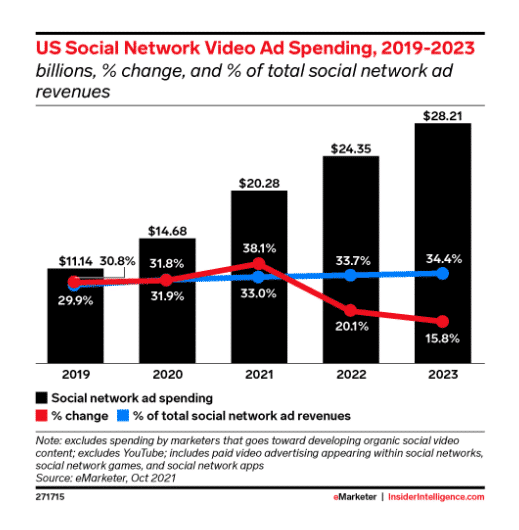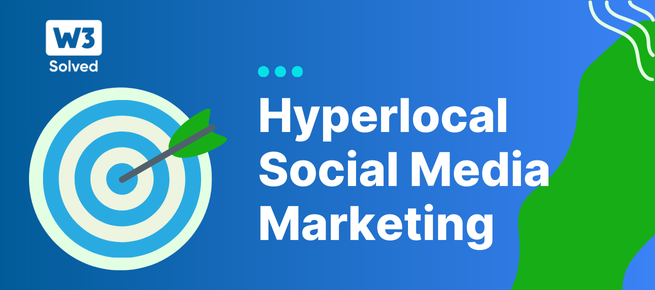What is Hyperlocal Social Media marketing?
Hyperlocal social media marketing is a targeted marketing technique that focuses on engaging with audiences inside a selected geographic location. By leveraging social media platforms, businesses can create localized campaigns, acquire their audience greater efficaciously, and energy better engagement and conversions. In this in-depth evaluation, we will try to discover the important factors and advantages of hyperlocal social media marketing, providing insights into the techniques and best practices for effectively targeting right keywords.
Understanding Hyperlocal Marketing
The primary objective of hyperlocal marketing is to increase shoppers who come to a store’s actual location in response to “near me” searches.
To locate the nearest shop, a suitable hyperlocal marketing example would be, I might type “coffee shops near me” into a search engine. Then, cafes whose SEO team or agency employ hyperlocal marketing tactics/keywords would show up in the search results. It works best in social media as well.
If you want to raise awareness of your brand and drive foot traffic into stores, hyperlocal marketing is the way to go. Let’s go on to discussing some tactics that can improve your hyperlocal advertising returns. Before that, you need to understand the importance and possible outcome with the tactics. So, let’s dive into it first.
Importance of Social Media in Hyperlocal Marketing
In recent years, hyperlocal marketing campaigns comprised social media platforms. They’re an efficient, low-cost strategy for reaching local consumers and expanding your brand’s reach. Social media marketing allows companies to contact customers in a specific area by utilizing the geo-targeting features of sites like Facebook, Instagram, and Twitter.
Tactics of Hyperlocal social media
1. Keyword Research for Hyperlocal Social Media Marketing.
Researching relevant keywords which one of the core part of monthly SEO is an essential part of hyperlocal social media marketing. It entails determining and analyzing the keywords and phrases that are pertinent to the local audience that is being targeted.
Businesses can optimize the content of their social media platforms by aligning it with specific keywords if they are aware of the local community’s language and search patterns. Finding hyperlocal keywords can be made easier using tools such as Google Keyword Planner, SEMrush, and Moz Keyword Explorer.
2. Localized Content Creation.
After the pertinent keywords have been determined, it is time to generate localized content that caters to the unique wishes and aspirations of the local audience. This content should be created immediately.
This includes developing appealing postings for social media platforms and films, pictures, and blog articles that naturally integrate the targeted keywords. Businesses may increase their brand loyalty and position themselves as a reliable resource within the local network if they provide valuable and relevant material to the target audience.
3. Geo-Targeted Social Media Advertising.
Geo-targeted advertising on social media platforms enables businesses to concentrate their marketing efforts on particular parts of the world. Platforms such as Facebook Ads and Instagram Ads give advanced targeted options that enable businesses to select locations and provide advertisements only to users located in those locations. Businesses have a better chance of reaching potential customers looking for local services or products using geo-targeting with vital hyperlocal phrases.
4. Engaging with Local Influencers.
Engaging with local influencers can expand the reach of hyperlocal social media advertising initiatives and increase the effectiveness of those efforts. Local influencers have a loyal following inside the network and have the potential to assist businesses in authentically connecting with their target audience. The exposure and trustworthiness of a brand can be significantly improved by working with influencers whose values are congruent with those of the local population and whose message strikes a chord with them.
5. Monitoring and Analytics.
To gauge fulfillment and make decisions based on facts, monitoring and analyzing the total performance of hyperlocal social media advertising and marketing initiatives is essential.
Using the tools available for social media analytics to keep track of crucial metrics such as user data, engagement, conversions, and demographics of the target audience. By examining the data, companies can identify trends, determine the success of the keywords they are concentrating on, and make critical adjustments to improve the performance of their future campaigns.
What are the pros and Cons of hyperlocal social media marketing?
If you are sure that your server can handle your next website, you are clear to connect your domain/website to your hosting environment. Steps you need to follow exactly how it is stated in here-
PROS of Hyperlocal Social media:
1. Precise Targeting: The use of hyperlocal social media marketing enables companies to target specific geographic regions with a high degree of specificity. This hyper-targeting makes certain that advertising messages are sent to the appropriate target market, hence increasing the likelihood of engagement and conversions.
2. Increased Relevance: Businesses can build highly relevant and individualized marketing campaigns by specializing in localized content and keywords. This relevance strikes a chord with the local population that we are targeting, establishing an agreement with them and enhancing the brand’s reference to capacity customers.
3. Higher Engagement: Businesses have a far better chance of seeing higher tiers of engagement on their social media platforms when they adapt the content of those platforms to a local audience. Customers in the immediate area feel more comfortable with a brand and are more likely to interact with and share content directly relevant to their social network.

4. Increased Brand Awareness: Advertising on hyperlocal social media helps businesses establish a strong presence within a neighborhood, increasing brand awareness. Most of the colorado SEO marketing agencies focus on this. Companies can increase brand awareness and ensure that their logo is the first thing that comes to the minds of local customers with relevant needs by maintaining a consistent focus on and attractiveness to local audiences.
5. Cost-Effectiveness: Compared to traditional advertising methods, advertising done through hyperlocal social media is frequently more cost-efficient. Businesses can effectively allocate their marketing expenses by specializing in a particular geographic place and addressing the appropriate target group while maintaining assets on broader efforts. This is made possible by the use of the Internet.
6. Word-of-Mouth Marketing: When businesses effectively engage with a local network, satisfied consumers are far more likely to share their high-quality experiences with others and spread positive word-of-mouth about the company. This organic kind of word-of-mouth advertising has the potential to significantly amplify the reach and impact of efforts made to advertise on hyperlocal platforms of social media.
7. Local Collaborations: Hyperlocal advertising paves the way for partnerships with local businesses, organizations, and people with power in the community. Businesses can expand their customer bases, gain access to new networks, and build their credibility within the community by forming partnerships with reputable local organizations and institutions.
8. Real-Time Interaction: The frameworks of social media make possible instant and real-time interaction with the audience in a specific location. Businesses can respond to questions and concerns raised by customers, address issues raised, and participate in conversations taking place in the community. This helps to cultivate a feeling of responsiveness and builds consumer belief.
9. Results That Can Be Measured: Hyperlocal social media advertising and marketing provide businesses with powerful analytics tools, which can be used to modify and level the overall success of marketing campaigns. Because of these figures, businesses can gain valuable insights into the effectiveness of their methods, make decisions based on facts, and optimize future efforts for more significant outcomes.
10. Improved Local SEO Visibility: A robust presence on hyperlocal social media might increase visibility in the neighborhood search engine optimization (SEO). Companies can boost their chances of acting in local seek impacts, thereby driving natural visitors and increasing their visibility, by consistently targeting neighborhood key phrases and attractive with the network.
CONS of Hyperlocal Social media:
1. Reach Is Restricted Because of the Use of Natural Elements: Using natural elements in hyperlocal social media advertising restricts the reach to a specific geographical location. This could be a disadvantage for organizations that aim to expand beyond the confines of their immediate area.
2. Small Target Audience: Companies may also have a lesser pool of prospective customers compared to more extensive advertising and marketing campaigns as a result of the extent of the area that is being targeted, depending on the specifics of the location. Due to the current state of affairs, it is imperative that firms carefully evaluate the potential return on investment (ROI) for hyperlocal activities.
3. Saturation and Competition: In highly competitive areas, agencies could also encounter difficulties in standing out from the crowd and capturing the attention of the local target market. Conquering a challenge like this requires overcoming obstacles like saturated markets and local businesses with strong ties to the community.
4. Scalability Issues: It can be challenging to scale up hyperlocal social media advertising efforts, particularly when expanding into new geographic areas. Scalability issues are caused by limited scalability. It necessitates extensive research, individualization, and modification so that it can be tailored to the distinctive qualities of each region.
5. Lack of Diversity: One potential downside of concentrating solely on hyperlocal advertising and marketing is that it may lead to a less ethnically and culturally diverse clientele. If you depend only on one geographic region, this may also limit your exposure to particular demographics and market sectors.
6. Tracking Offline Conversions: Hyperlocal social media advertising could run into difficulties when tracking offline conversions precisely.
Businesses could have limitations in promoting their products or services depending on the size and demographics of the area where they are concentrating their efforts. If a market is smaller or more specialized, the pool of potential customers may be more limited, resulting in a reduced customer base and a more gradual expansion rate.
7. Potential Breaches of Privacy: Given that hyperlocal advertising and marketing heavily depend on regional statistics, people may become more concerned about privacy. For businesses to maintain agreement with their target audience, they need to ensure that they are transparent about data protection and its practices and comply with privacy standards.
8. Scalability Issues When Considered Across Multiple Locations: It may be challenging to simultaneously expand hyperlocal social media advertising efforts across multiple areas. Scaling up operations successfully can be difficult and time-consuming because each domain may require unique strategies, content, and a particular keyword to be focused on.
9. Dependence on the Algorithms Provided by the Platform: The success of hyperlocal social media advertising and marketing mainly depends on the algorithms used by particular social media platforms. These algorithms need to be able to offer data that is as close to being accurate as possible, as it should be intended, and display information to an audience that is focused on their neighborhood. Alterations to a platform’s algorithms or laws can impact hyperlocal campaigns’ reach and visibility, necessitating businesses to adjust their plans accordingly.
10. Risk of Overlooking Broader Opportunities: They are putting all of one’s attention on hyperlocal advertising efforts risks causing one’s organization to miss out on prospects in more extensive markets. While it is essential for businesses to focus on local audiences, they should recognize the capacity advantages of running efforts that are more widespread. These ads could draw customers from neighboring regions or customers attempting to locate services and goods outside their immediate locality.
11. Dependence on Social Media Platforms: There are inherent risks involved in putting all of your hyperlocal advertising and marketing efforts into the hands of social media platforms alone. The efficiency of hyperlocal advertising and marketing strategies can be negatively impacted by various factors, including updates to platform algorithms and rules and a platform’s falling popularity overall. The best way for companies to protect themselves from risks like these and maintain a more robust presence is to diversify their advertising channels.
Our thought on the Drawbacks of Hyperlocal social media marketing.
It is vital to emphasize that although these drawbacks exist, they may be minimized via careful planning, strategic execution, and continuous tracking and revision of hyperlocal social media marketing plans. By giving equal weight to the benefits and downsides, businesses can better make educated decisions and modify their approach in a way that maximizes the potential advantages while minimizing the potential disadvantages.




